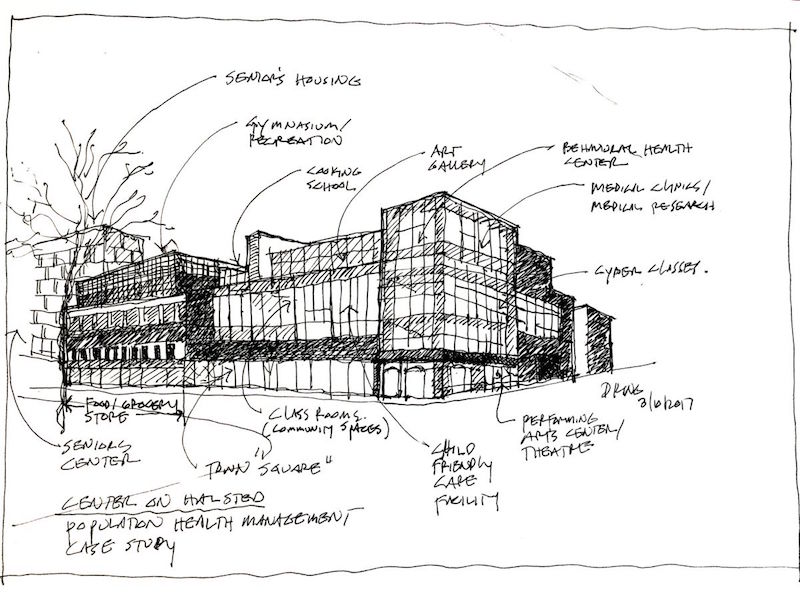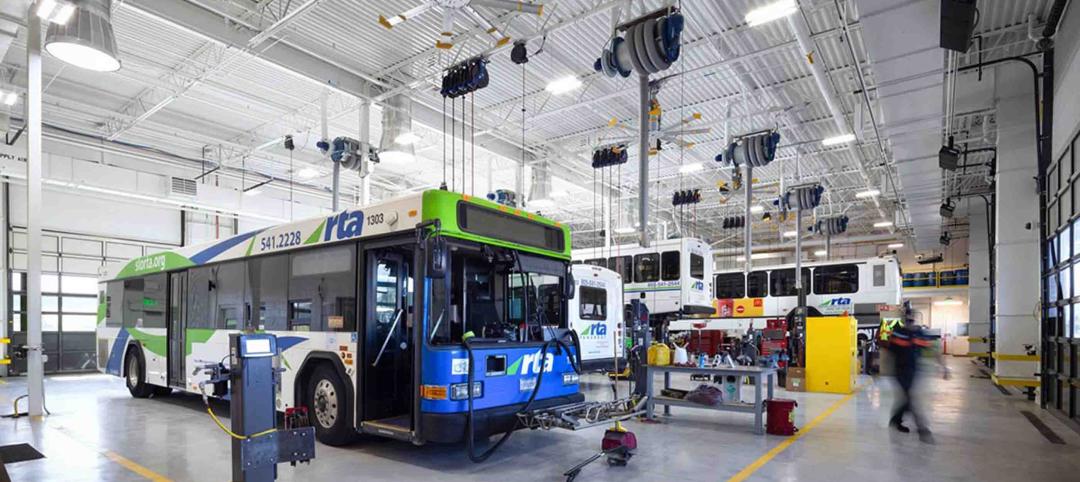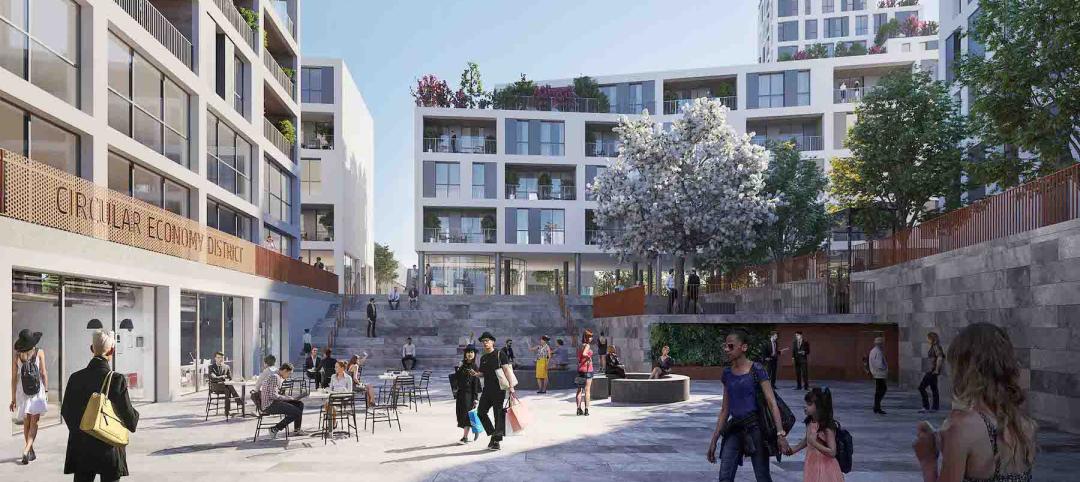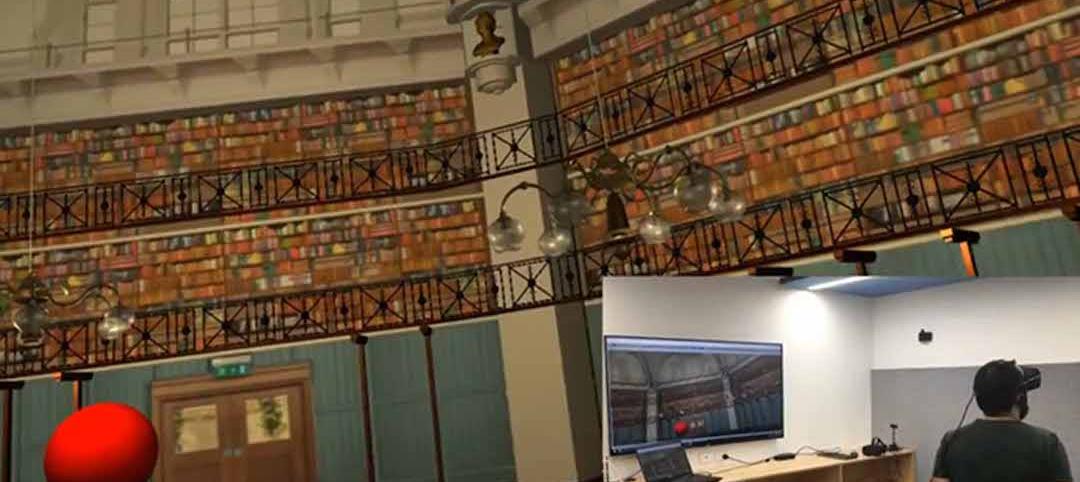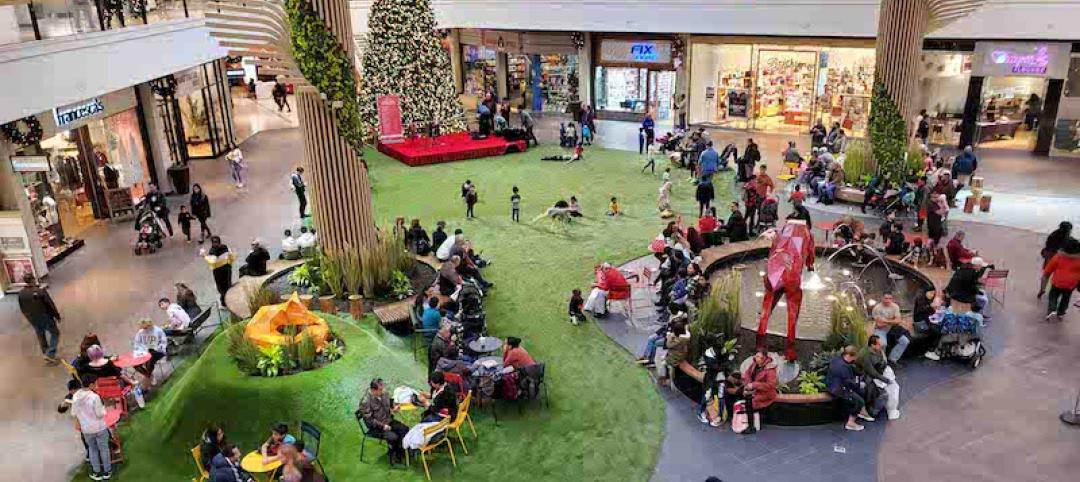If you know me, you know I like to play table tennis. One evening as I set down my racquet for the night, something occurred to me. The facility where I play contains a collection of services that offered an excellent case study of a facility supporting population health management. One could even say that my ping-pong workout at the Center on Halsted, a community health center, was a form of personal health management.
Healthy living centers, as defined by Geoffery Purves and explored in my previous blog post about healthy living centers of the future, are complexes offering a more holistic model for delivering healthcare that meets the needs of our increasingly population-centered healthcare system. It occurs to me that the Center on Halsted and other community health centers are the closest thing we have to a healthy living center today.
My colleague Jingfen Guo (Visiting Assistant Professor at University of Central Oklahoma) and I have identified sixteen functions that a community health center can offer to support population health management—the Center on Halsted engages in all of these to a degree. We believe these functions must be embraced to achieve a holistic approach to Population Health Management.
- Access to education programs and job skills training
- Access to healthy food
- A connection to affordable primary care facilities
- Access to affordable housing – permanent and/or transient
- Embracing elder care across the continuum of care spectrum
- Provisions for community gathering and spaces on a broad scale
- Embrace of entertainment and culture
- Inclusion of the arts in the healthcare environment
- Outdoor spaces for healthy recreation/exercise
- Respite care options for caregivers and family members
- Access to affordable transportation to surrounding healthcare institutions
- Provisions for child care and embracing a child-friendly healthcare environment
- Provisions for community safety and emergency response
- Embracing social sustainable responsibilities and development of a regional connection
- Promoting development of synergistic uses within the surrounding urban fabric
- Embracing agriculture by instruction in growing healthy foods
Are community health centers the future of population health management?
The Center on Halsted, located in Chicago, Illinois opened a decade ago with a mission of supporting the GLBTQ community as both an agent for social services and community and cultural hub. The Center’s community services have grown organically to accommodate the needs of the GLBTQ community it serves in Chicago. Under one roof it contains a wide range of activities and services from entertainment, education and recreation to healthcare, housing and job training. The Center offers classes in Photoshop, maintains a culinary arts school that helps with hospitality industry job placement and features attached subsidized senior housing. A behavioral health leader in the region, the Center hosts Northwestern Medical Hospital researchers and its wellness center offers HIV testing, health screening and counseling. COH has community meeting rooms, recreational facilities, and a black box theater of its own. That’s just an overview.
I believe the Center on Halsted (designed by Gensler) offers a model of one kind of community health center. Its range of services and multi-leveled approach to health in the community speak to a vision of healthcare that meets the population where it lives and wants to be and helps it through education, lifestyle, diet and career assistance. It’s a Swiss Army knife preventative approach that is necessary and smart. Yet, there are aspects to these community health centers that are still untested.
Effectiveness
Which services should community healthcare centers prioritize? The answer is simple: Whichever services are most effective at reducing community health deterioration and resultant increase in chronic health problems. This is where research metrics can play a part in the development of an effective mix of programs and activities that benefit community health. Education and housing services, both available at the COH, are likely crucial to community health. Developing research on services and their effect on health outcomes will be crucial to justifying funding for community healthcare centers.
Settings and approaches
We also pondered the issue of “Are the services offered scalable or transferable?” Can an approach that works in the large inner city environment like COH in Chicago also provide similar outcomes in a suburban environment and in turn, can these services be offered in an effective manner in a more rural community? Community health centers like COH are unlikely in less densely populated areas, but the mix of services we’re interested in could be provided in settings such as suburban community centers or the rural township hall—or by leveraging nearby hospital space during off-hours.
Who do they serve?
What constitutes a community? In the case of the COH, the GLBTQ community is a population group with a particular range of healthcare and social service needs. With similar facilities (Jewish or Asian community centers spring to mind) the core community can be defined by its religious background or ethnicity. But ultimately, community healthcare centers must serve a broad population, ideally, everyone in an area. How can a community bond be developed with a broad and diverse population that are found in our cities and suburbs today? How can we foster sustained loyalty, trust and participation in a community healthcare institution?
Financing community health
Ballooning healthcare costs are driving the turn to population healthcare, so ultimately community healthcare centers must prove their case as fiscally sensible investments in health. But first they must get off the ground. How would a healthcare organization fund these community centers? The changing nature of healthcare reimbursements offers healthcare institutions an opportunity to cover the costs of these services as part of a comprehensive preventative healthcare package. Ideally, their services will be reimbursed by programs such as Medicare and Medicaid.
Reorienting healthcare institutions toward community health
It may seem that there are great obstacles to healthcare institutions adopting this community health model, when in fact existing institutions have numerous advantages that can be adapted to community health centers. In short, they have experts, space and time.
Healthcare Institutions have experts. Embedded within the healthcare community at any hospital is expertise in many of the sixteen elements. Healthcare Institutions often have available space that’s hardly used. Facilities used for education, training and meeting can be transformed to offer a broader range of services. Healthcare institutions have available time. During down time, early mornings or evenings for instance, facilities can be dedicated to community health initiatives and other services. Ramping up the hours of space utilization plays into the cost-effective appeal of this approach. The Center on Halsted basically runs 24 hours.
In the new paradigm, hospitals and healthcare institutions are rewarded for using health dollars more wisely to prevent chronic illnesses which require expensive treatment. They will need to guide the population toward healthy living and away from disease. They’re going to need all the best ideas and examples they can get.
Douglas King is a leader in Stantec’s healthcare practice with extensive experience in healthcare design for institutions covering a broad range of delivery including Northwestern Medicine—a top five academic medical center and the Veteran’s Administration. Doug was most recently seen blogging and presenting on high-rise “vertical” healthcare projects. When not lecturing on the future of healthcare design, he can be found on the nearest table tennis court.
More from Author
Stantec | Apr 18, 2024
The next destination: Passive design airports
Today, we can design airports that are climate resilient, durable, long-lasting, and healthy for occupants—we can design airports using Passive House standards.
Stantec | Mar 18, 2024
A modular construction solution to the mental healthcare crisis
Maria Ionescu, Senior Medical Planner, Stantec, shares a tested solution for the overburdened emergency department: Modular hub-and-spoke design.
Stantec | Nov 20, 2023
8 strategies for multifamily passive house design projects
Stantec's Brett Lambert, Principal of Architecture and Passive House Certified Consultant, uses the Northland Newton Development project to guide designers with eight tips for designing multifamily passive house projects.
Stantec | Apr 10, 2023
Implementing human-centric design in operations and maintenance facilities
Stantec's Ryan Odell suggests using the human experience to advance OMSF design that puts a focus on wellness and efficiency.
Stantec | Jul 6, 2022
5 approaches to a net zero strategy that communities can start right now
Whether your community has started on a plan or is still considering net zero, now is the time for all of us to start seriously addressing climate change.
Stantec | Feb 14, 2022
5 steps to remake suburbs into green communities where people want to live, work, and play
Stantec's John Bachmann offers proven tactic for retrofitting communities for success in the post-COVID era.
Stantec | Feb 8, 2022
How gaming technology is changing the way we design for acoustics
Adding 3D sound from gaming engines to VR allows designers to represent accurate acoustic conditions to clients during design.
Stantec | Dec 15, 2021
EV is the bridge to transit’s AV revolution—and now is the time to start building it
Thinking holistically about a technology-enabled customer experience will make transit a mode of choice for more people.
Stantec | Sep 3, 2021
Passports to a net-zero carbon future
How materials passports can help designers achieve social value and net-zero carbon.
Stantec | Aug 25, 2021
The mall of the future: Less retail, more content
For the mall to survive, it will need to embrace nontraditional uses and “messy vitality.” Here’s how to do it.

